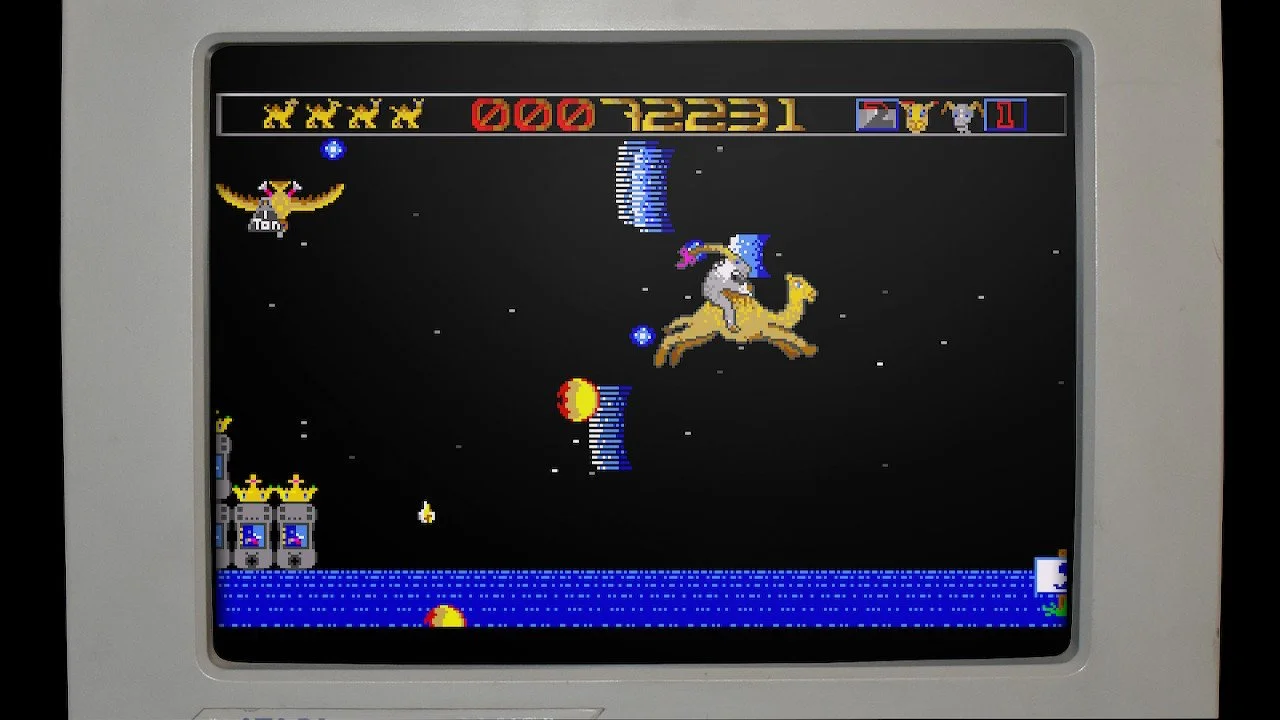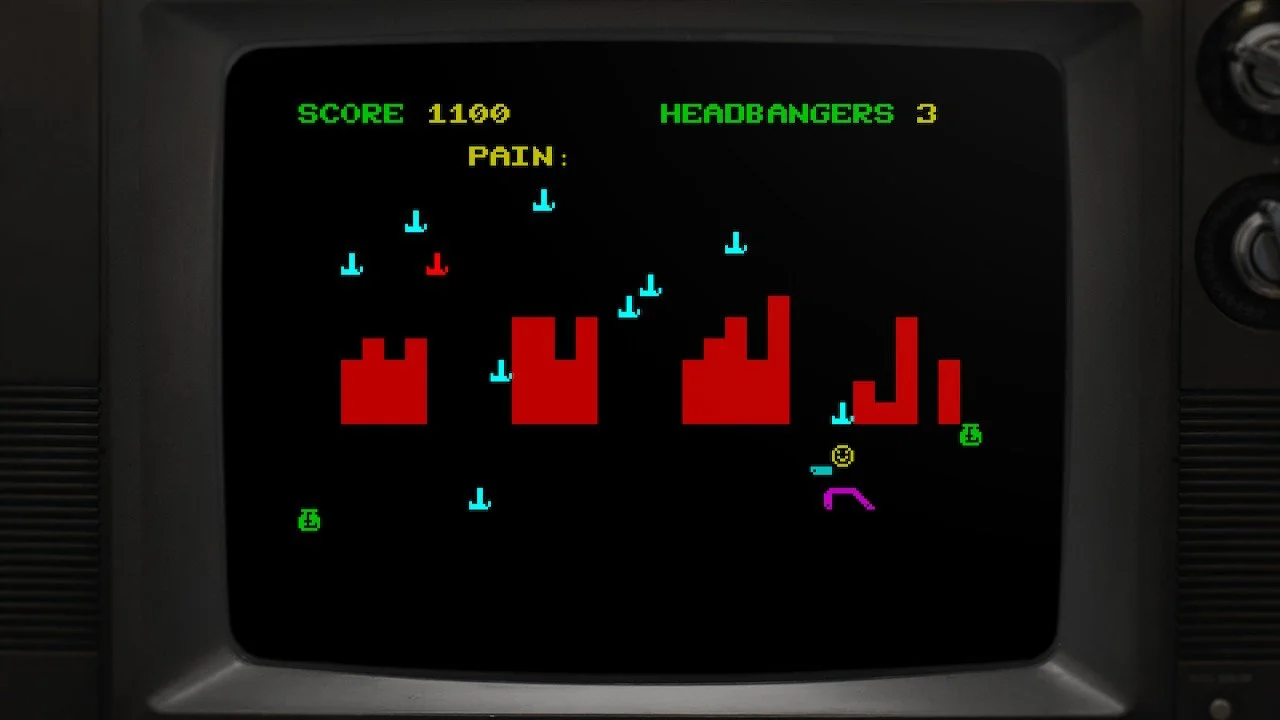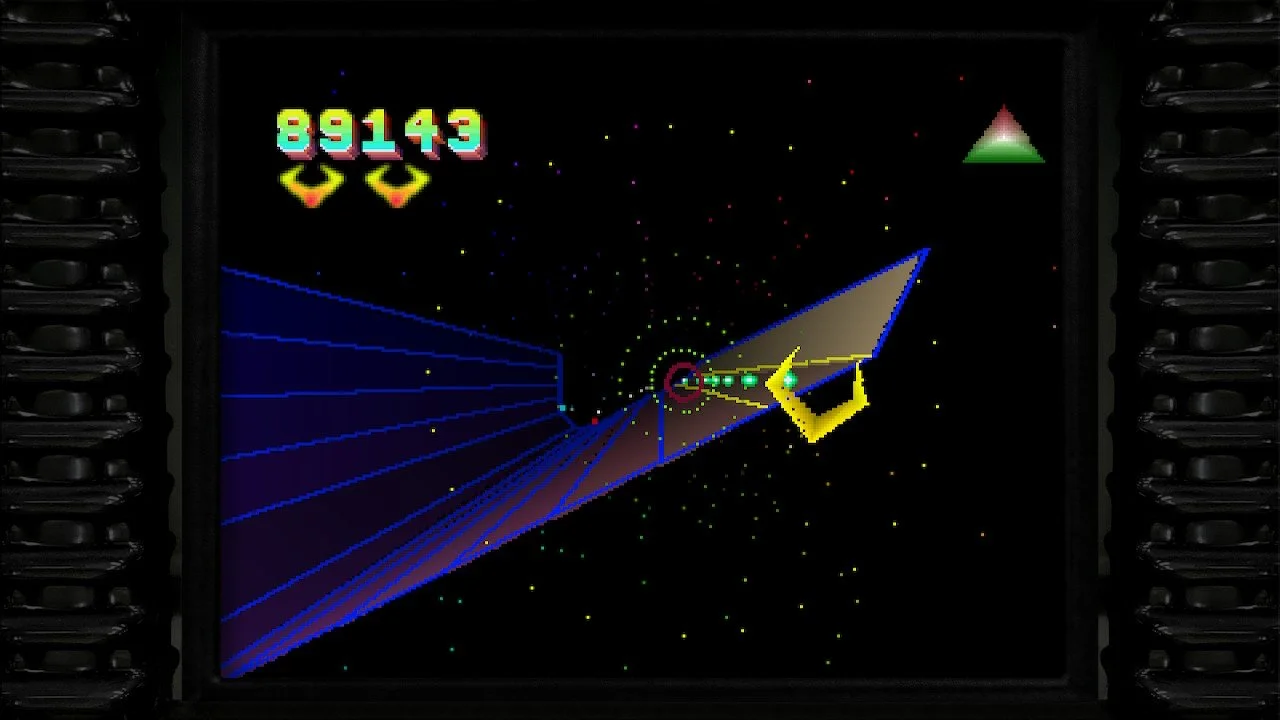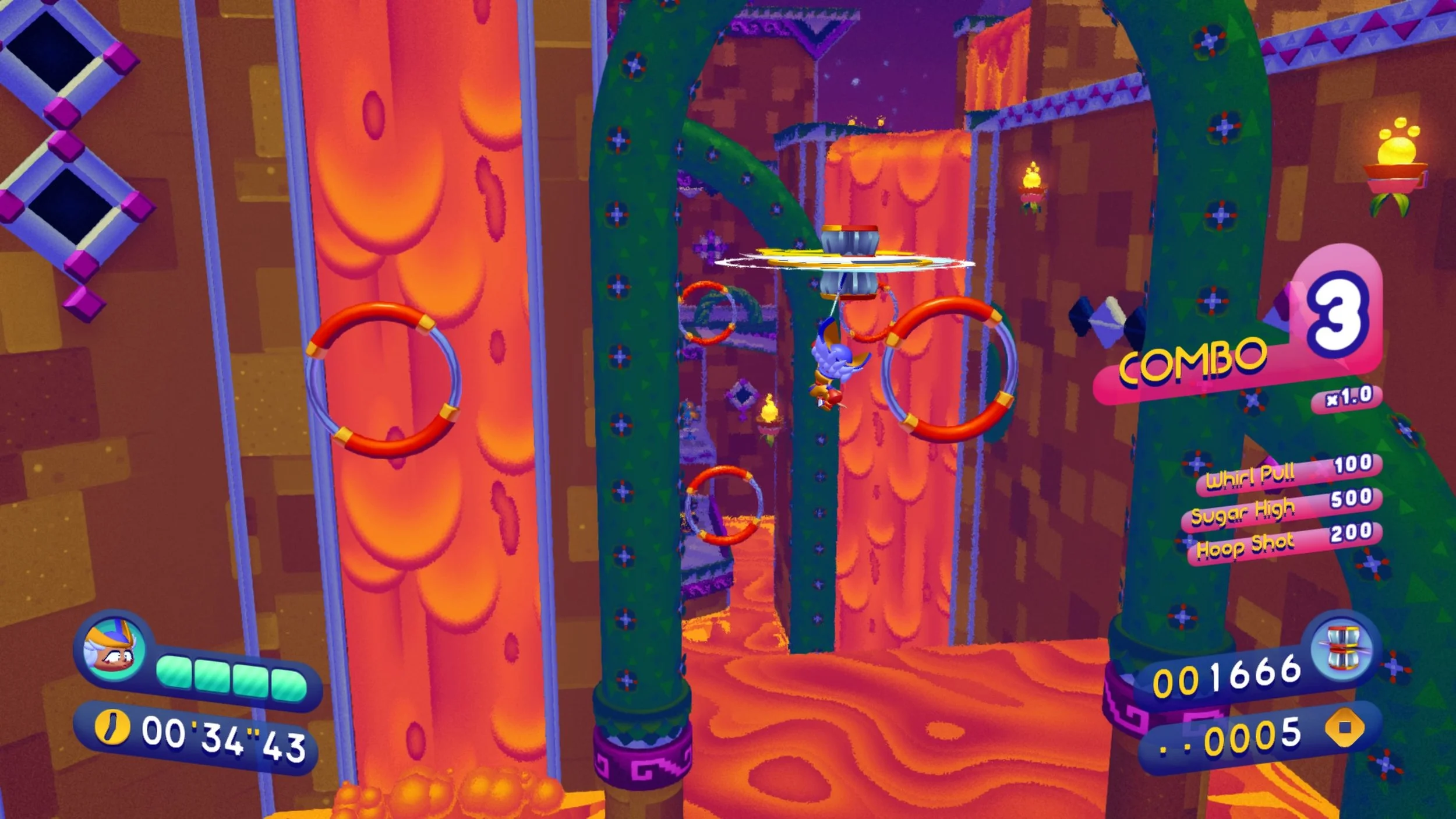How Do You Review Games Like Llamasoft's?
Don Everhart, Managing Editor
Llamasoft: The Jeff Minter Story is an interactive documentary. As with previous Digital Eclipse efforts, including Atari 50: the Anniversary Celebration and The Making of Karateka, that means that it is a mix of games and context, arranged in chronological order. Nodes along that timeline include playable games, archival documents and photography, and a series of interviews that prominently involve talking heads. As a fan of Minter’s work, particularly his most recent work from the mid-2010s to the present, I’m not surprised to have found plenty to chew on. Even from my perspective as a fan, however, I am most inspired by Minter’s light synthesizers. It turns out that his most beautiful work might not be games, after all.
Minter is up front about how his early games derived their gameplay from arcade hits, and how Llamasoft's early success was often made from adapting others' ideas to home computers like the Sinclair and Commodore. It's inspirational to see how this approach provided a platform to become weirder and more experimental over the years until Llamasoft and Minter came into their own. First, there are Camels in place of Star Wars’ AT-ATs. Then, you play as the Camel. Then, maybe you're a kill droid protecting a family of Llamas and you are given control over the order of incoming enemy waves.
A goat rides a camel through waves of lasers and fireballs in Revenge of the Mutant Camels (1991).
Throughout, Minter describes making games from the perspective of someone who loves to play. For a lot of his earliest games, he maintains a good-natured, slightly bewildered attitude that is consistent with his tone in reproduced copies of the Llamasoft fan newsletter. For example, there’s his statement on the whiplash of being kicked out of university and then being flown to the US by a games publisher: “...here was my arse on a plane, flying to California with a G&T in my hand, apparently in demand and on course for a career in something which didn’t even exist during the time that I was passing through the educational system.” Llamasoft was (and, I suppose, still is) a family business that was built on a shared enthusiasm for the basic pleasure of videogames. Minter’s own fascination with the act of tapping keys or wiggling a joystick and seeing something happen as a result on screen reminds me of David Sudnow’s description of his similar fascination with early Atari games in Pilgrim in the Microworld . Digital interactivity has become routine in 2024, but I understand how it would create a sense of wonder in the early 1980s.
In an interview on his design philosophy, Minter articulates that he feels playing a game should be an end in itself. Endings and story aren’t all that interesting to him. Minter doesn’t see much fun in finishing a game just to check it off a list and place it back on the shelf. To him, the point is to feel something moment to moment. He compares this to listening to an album of music that a person really enjoys and plays again and again. At the same time, Minter doesn’t convey that there’s anything particularly grandiose about games, saying, “Essentially it’s all a feedback loop though, isn’t it. It’s all about, like, you doing something and the game feeding something back to you.”
Chico the Headbanger dodges (or happily is nailed by) falling hammers in Headbanger’s Heaven (1983).
That’s not a particularly rich statement of design. I think it underplays what Minter is capable of at his most inspired and engaged. Happily, Digital Eclipse has provided loads of other materials that show when his heart is really in his work. To me, this is most obvious when it comes to his light synthesizers. In one of the Llamasoft newsletters included in this collection, Minter describes the algorithm and program for the first of these: a piece of software he called Psychedelia. After creating a mock-up of the program, he tells a story about getting friends to come in from a local pub, putting on a Dave Gilmour CD, and staying up past four in the morning making visualizations alongside the music. As a result, Minter wrote: “I dropped the game I was working on and spent the next two weeks coding like a demon. I have never worked so hard at anything in my life, nor have I ever wanted anything so much as I wanted to complete the light synth.”
More was to come from Minter after Psychedelia, of course. That was a piece of software he released in 1984. I love the spirit of the game, down to the hyperbolic copy printed on the back of the cover for the game (which Digital Eclipse has re-created as a rotatable, 3D model in Llamasoft). Psychedelia is marketed as “a step beyond games,” “beyond competitiveness,” “an entertainment,” and, finally, “a dance with rainbows.” Yes, this extols the virtues of what, in the cold light of day, is a software in which a user can drag around and pulse pixels as their color and shape is mathematically transformed on screen. It was rapidly exceeded by Minter himself with Colourspace in 1985. In the Colourspace manual, Minter wrote that “the difference between Psychedelia and Colourspace is as pronounced as the difference between a Mini and a Ferrari.” And indeed, the visuals in Colourspace still hold up, nearly twenty years later. I’ve enjoyed both playing it and simply running the attract mode to tracks that are included from the Polybius soundtrack, although in Llamasoft, I believe they’re simply identified as the “Minter Mix.”
I also wonder about the degree to which Psychedelia and Colourspace do play as games. They certainly qualify under Minter’s schematic definition of videogames as feedback loops. There’s pleasure to be had in tweaking the settings, moving the cursor, and tapping or holding as streams of color flow, smear, reflect, and refract across the screen. Maybe, as the “synthesizer” part of their name is meant to imply, these are more like software instruments. Sudnow, who is perhaps most famous for his technique to learn piano and keyboards and perspective on jazz in Ways of the Hand, might have noted the similarity. And in the sense of ordinary language, in English, we use the same verb to play a keyboard as we do to play a game.
Firing down the filled, fully 3D polygons of Tempest 2000 (1994)
If Minter’s light synthesizers are examples of interactive art and technology, then so is everything else in Llamasoft. And for all that Llamasoft is an enjoyably curated trip to the archive, I still have unanswered questions about how Minter thinks about his work as art. He continues to be self-deprecating about his own capabilities as a sprite and voxel artist, but his algorithmic art in his early and more recent light synthesizers seems to be a true source of pride. It’s also one on which he’s changed his opinion in between the 80s, 90s, 2000s, and present day. At first, with Psychedelia and Colourspace, Minter was adamant about the importance of a human operator, someone playing along to music or just by itself. But by the late 80s, with more computing power, he was already producing new versions that were algorithmically responsive to music. Light synthesizers became machines providing feedback to themselves, with humans watching the output.
Llamasoft tells only part of the story, considering that Minter has continued to iterate light synthesizers and create games in the intervening decades to the present day. His recent spin on Atari’s Akka Arrh was one of my favorite games to come out last year, and I adore his and Giles Zorzin’s work in virtual reality, particularly Moose Life and Polybius. Minter is still experimenting with ways to incorporate light and sound together with play. I would like to hear more about that, to hear Minter and Zorzin ramble on about Demoscene, to ask them about 90s rave culture and if Akka Arrh’s soundtrack marks a turning point after 30 years of pulsing beats all the way from Tempest 2000 to Moose Life. Llamasoft leaves off right at the start of that passage, with the Atari Jaguar and Tempest 2000. Digital Eclipse, after using his footage throughout, provides a few minutes at the close to documentarian Paul Docherty and he gestures at just a few of those connections. This story had to end somewhere, and Tempest 2000 marks the combination of gameplay, sound, and light that has since become hallmarks of Llamasoft’s style and Minter’s art. Play it, then take a step forward and play what came next.
Digital Eclipse provided a review code for this game. As usual for GwG, PR played no part in the resulting writing or publication of this review.





